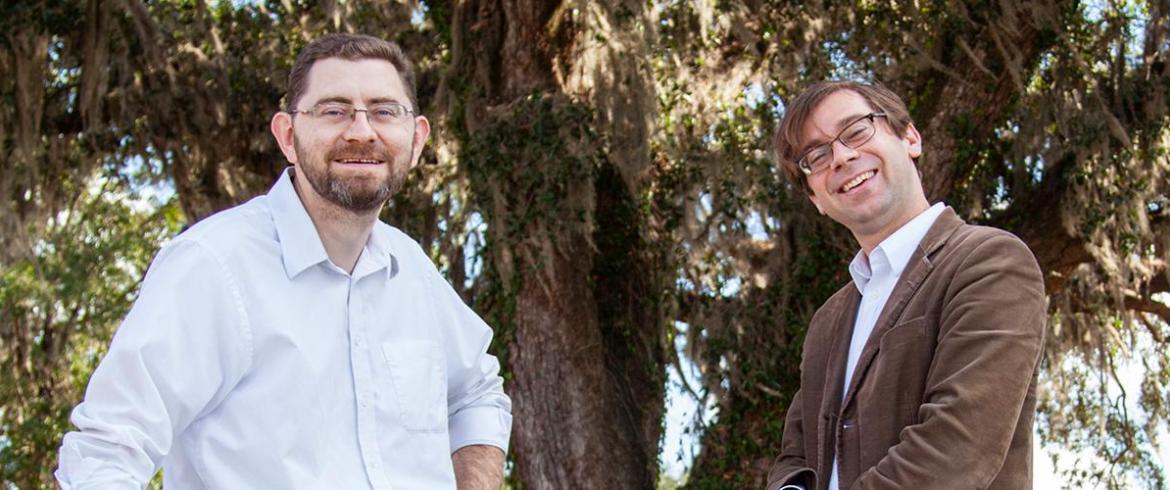
Jonathan Clark, Ph.D. likes cockroaches. Geckos too. At least, the way they can maneuver, their gait and their ability to move quickly over a variety of terrains. Clark, a professor of mechanical engineering at the FAMU-FSU College of Engineering, is director of the Center for Intelligent Systems Control and Robots (CISCOR). The robotics researcher works on replicating biologically inspired movement to advance robot design.

Dr. Jonathan Clark and graduate student Jason Brown
Clark deals with the world of small robots and has built some of the fastest and most efficient legged machines—including one that climbs fast enough to scale a 100-foot building in one minute. His current research aims to expand the versatility of these robots so that they can automatically adjust how they use their legs when they encounter different surfaces. Having robots that can use their legs to run, jump, climb walls, as well as swim, will allow them tremendous flexibility in moving through difficult, real-world environments. Clark has examined and identified three distinct gaits for motion and the differences between them, and hopes understanding these nuances will lead to better design.

Christian Hubicki, Ph.D.
Christian Hubicki, Ph.D. is another researcher at CISCOR, a robotics professor who works with a larger-scale robot, fondly known as “Tallahassee Cassie.” Standing 4. feet tall, Tallahassee Cassie resembles a pair of mechanical ostrich legs. Agility is what sets this robot apart, but this potential for speed and maneuverability also makes stabilization a hard research problem. Hubicki’s research team is trying to implement stabilization algorithms that make the robot stable on rough terrain it can’t even see—what is known as self-stable locomotion.
Hubicki hopes the information learned will teach us how people walk, run and balance themselves. The ultimate goal of the research is to assist people who have lost these abilities by providing designs for exoskeletons and prosthetics.
